Text
St. Patrick’s Cathedral, NYC
St. Patrick’s Cathedral is a beautiful Catholic church located in New York City. The cornerstone was laid in 1858 and its doors first opened in 1879. The spires were completed in 1888, the Lady Chapel in 1908, Kilgen Organ installed between 1928 and 1930, and other improvements made in the 1940s and 1970s. Inside the church is filled with beautiful stain glass windows, sculptures, statues, hand-carved wooden architecture, and gold accents throughout the church.
When it was built, it was paid for by weeks of fundraising efforts through The Great Cathedral Fair in October and November of 1878 as well as thousands of poor immigrants and 103 prominent citizens who pledged $1000 each. On May 25, 1879, John Cardinal McCloskey presided over the dedication of the Cathedral. It is the oldest Roman Catholic parish in New York City today.
St. Patrick’s Cathedral, beginning on March 17, 2012, a Restoration that would take place in four phases with a team of experts in the fields of architecture, engineering, artistry, and various others in restoration. Phase 1 was the exterior where the entire 300,000 sq. ft. surface of the external structure was cleaned to remove decades of debris from the stone. Phase 2 was the interior cleaning of the cathedral including the stained glass windows and the organ with its 7,855 pipes to name a few. In Phase 3 they did the innovative upgrades such as plumbing, electric, fire prevention, etc beginning in 2015. Then finally the final Phase 4 being the geothermal launch in February of 2017 where it would be the first structure of its kind to use Geothermal Technology for heating and cooling the 76,000 sq. ft. space.
Today the restoration is completed until it is repeated in the next several decades. The cathedral does normal church but is also open to the public year-round. It is a major tourist attraction and famous landmark.



0 notes
Text
Gilly's Hotel...
If you visit the old downtown area of Bulls Gap, Tennessee, you will come across an old abandoned building by the railroad tracks. Today, the building is known as Gilley’s Hotel. When the hotel began, it was owned by Clisby Austin and known as the Austin House. The hotel was placed up for sale on November 30, 1871. Later, Peter Smith, who married into the Austin family, became the proprietor and renamed the hotel the Smith House. Eventually, George Mooney and his wife became the operators of the Smith House and then changed the name once again to the Mooney House. The hotel was purchased on September 4, 1920, by R.H. Gilley and his wife, Minnie Gilley, who later changed the name to Gilley’s Hotel.The original building was built of brick and consisted of the basement and three stories. The building had a kitchen and dining room, a barbershop, and sleeping rooms. In the 1920s, Mr. Gilley built and added to the hotel using concrete blocks. He also added a concrete porch on the ground level and a porch on the second floor which adjoined the two parts. Mr. Gilley passed away on January 5, 1969, and the hotel was sold on February 1, 1972, to Eugene Goan. On February 2, 1972, the property was sold to Hugh C. Goan and R.J. Wisecarver. In January 1978 the hotel was sold to Francis Johnson. On August 11, 1982, the property was sold to James Walls and Bill, and Jimmie Manis. At that time, Mrs. Bonnie Gilley reserved the right to live in her apartment at the hotel as long as she lived. In 2003, the Gilley’s Hotel was donated to the Bulls Gap Railroad Museum.


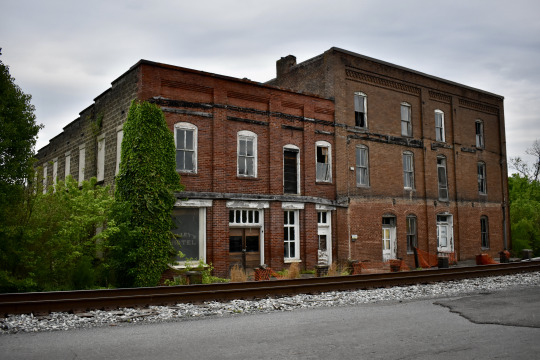
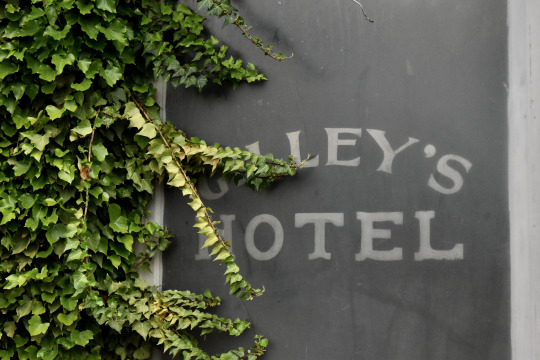
0 notes
Text
Walker Sisters Cabin, Gatlinburg TN...
When the Great Smoky Mountains National Park was created in 1940, many families in the Greenbrier community were asked to move out of their homes. However, a group of women known as the Walker Sisters refused to leave their farm. They had spent their entire lives on the farm. The farm began with their father, John Walker, who helped to build the Greenbrier schoolhouse mentioned in one of my earlier posts. John Walker and his wife, Margaret, had eleven children. Considering the times, it was miraculous that all eleven survived to maturity. When the sons married and left the farm and their father passed away, the daughters took on the farm responsibilities. They were completely self-sufficient. A deal was made with the Walker Sisters that they could keep their cabin and they sold their land for $4,750. With the establishment of the national park came many restrictions. They could no longer hunt, fish, cut wood, or many of the things they did to live off of the land. The sisters became the Welcoming committee for the park. When people would visit they would greet them and sell their homemade products such as fried apple pies and crocheted dollies. The Walker Sisters cabin can be seen still standing inside the national park today.

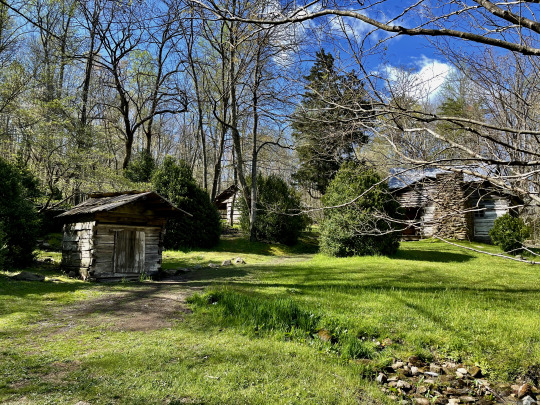
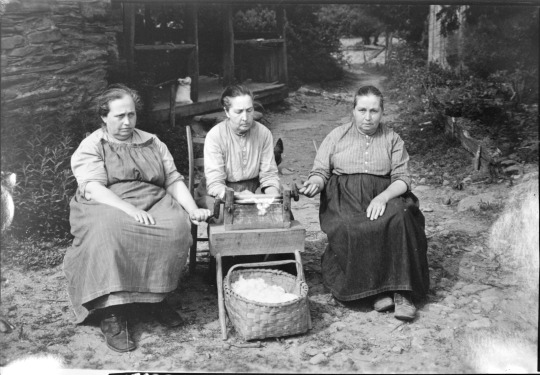
1 note
·
View note
Text
Coming Up...
New Post coming soon keep an eye out for my next blog...
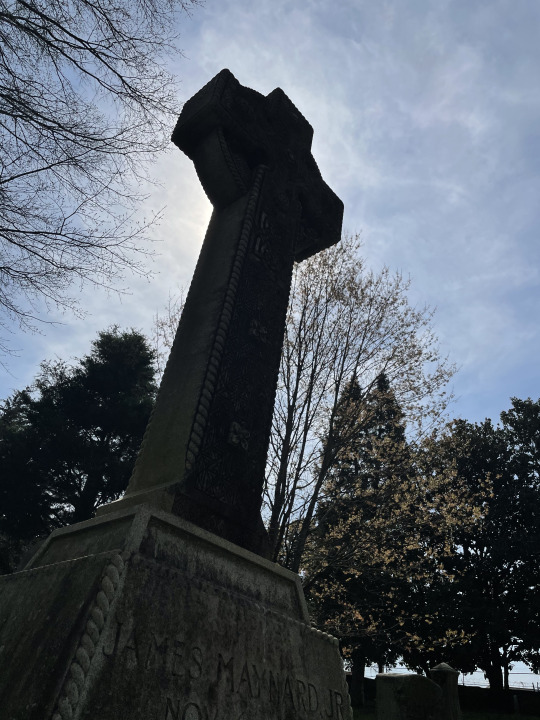
1 note
·
View note
Text
The Little Greenbrier School...
The Little Greenbrier School, located in the Great Smoky Mountains National Park, was built in 1882 and used as both a school and a church until 1936. This one-story building has an attic with walls made of yellow poplar logs. The gabled roof has oak shingles and the door is made of white pine hung with iron hinges. The idea for the school began when residents showed interest in having a teacher for their children. The school was built with the help of John Walker, who was the father of the Walker Sisters - another post is in the works about the sisters. The land was donated by Gilbert Abbott, logs donated by Ephraim Ogle, and many more residents from the area helped as well.
The building doubled as a church for a local Primitive Baptist congregation which was also responsible for the small cemetery located near it. If you hike the Metcalf Bottoms Trail you will find the small schoolhouse which still contains an old blackboard and wooden desks. The cemetery is still there as well although many of the stones are no longer legible.






1 note
·
View note
Text
Strecker Memorial Laboratory
Strecker Memorial Laboratory, funded by the Strecker family, was built in 1892 and was the second structure on Roosevelt Island in New York City designed by Frederick Clarke Withers. Hidden by the ruins of the smallpox hospital, that I covered in an earlier post, the Romanesque stone building was once home to groundbreaking work in understanding disease in the early 20th century. It was created as the first laboratory in the country devoted exclusively to pathological and bacteriological research. The laboratory was constructed as a support laboratory to the larger City Hospital nearby. The first floor had a room for routine examination of specimens, an autopsy room, and a mortuary. The second floor was used for more detailed research and experimentation. A third floor was later added in 1905 to include a facility for histological examination, a museum, and library space. In 1907, the lab became home to the Russell Sage Institute of Pathology. When the institute relocated, the laboratory continued working until it closed its doors in the 1950s. Strecker Memorial Laboratory was placed on the National Register of Historic Places in 1972.

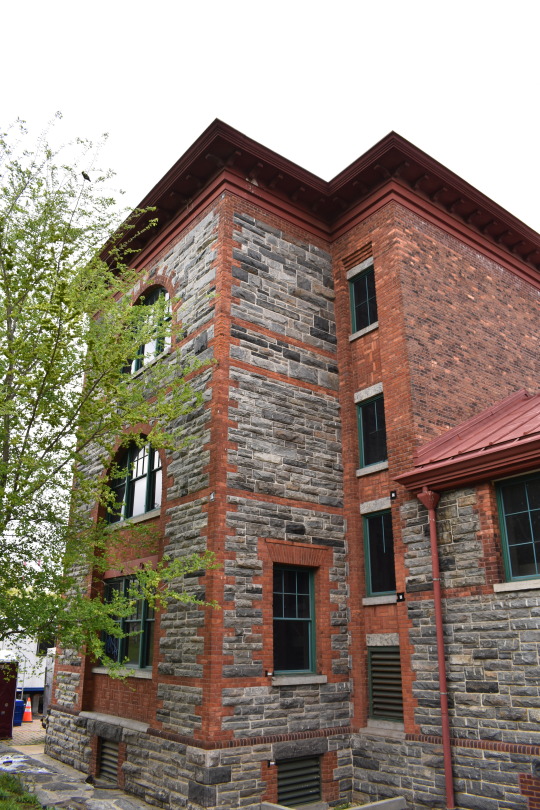


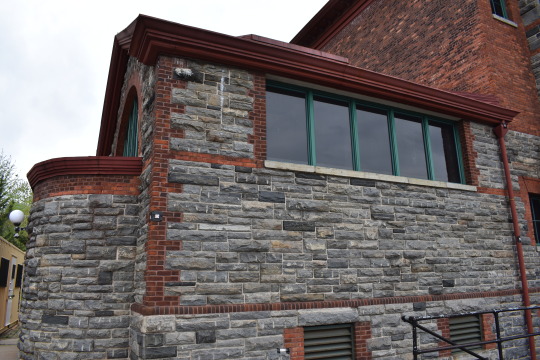
0 notes
Text
The Abandoned Smallpox Hospital...
Roosevelt Island is located in Manhattan, New York City, and at the tip of the island is a crumbling hospital. It opened in 1856 and at the time was known as Blackwell��s Island with a capacity for a hundred beds. The hospital would have additions added from 1903 to 1904 of the south wing and then the north wing from 1904 to 1905. The U-shaped hospital was three stories and had nine bays in its completion with Gothic Revival architecture. It was the first major U.S. hospital that was dedicated to the care of the Smallpox virus victims. The hospital was named the Smallpox Hospital until 1875 when the Sisters of Charity at St. Vincent’s Hospital were asked to take over by the New York City government. The hospital was then known as Riverside Hospital because it was entirely surrounded by the East River. Pleased with the Sisters, New York City officials would later publish a report stating "since the change in management [from City to the Sisters] has been effected, the hospital has been steadily growing in popularity, and it is not at all unusual for us to be gratified with the sincere thanks of returned patients for the kindness and tender care which they received.”Riverside would operate up until 1886 when it closed and was turned into a nursing school. Stripped of its surgical rooms and its hospital beds it would open up as the Home for the Nurses of the Maternity and Charity Hospital Training School. The wings that were added mentioned earlier were used for additional dormitories, training wars, laboratories, and classrooms for the nursing students and staff. Nurses would enjoy the building’s main yard for games and activities on the tennis courts, basketball court, and crochet grounds. It would serve as New York City's nursing school for the next 70 years. In 1950, the building was abandoned and has been ever since... Today a lot of the structures no longer exist and there is only a shell left with stairwells and windows no longer intact, no floors and the roof is completely gone. Braces have been put in place to keep the outside of the structure standing and has been fenced off from the public for safety and to preserve what remains. The Smallpox Hospital was added to the National Register of Historic Places in 1972 and was then added to the New York State Register of Historic Places in 1980.




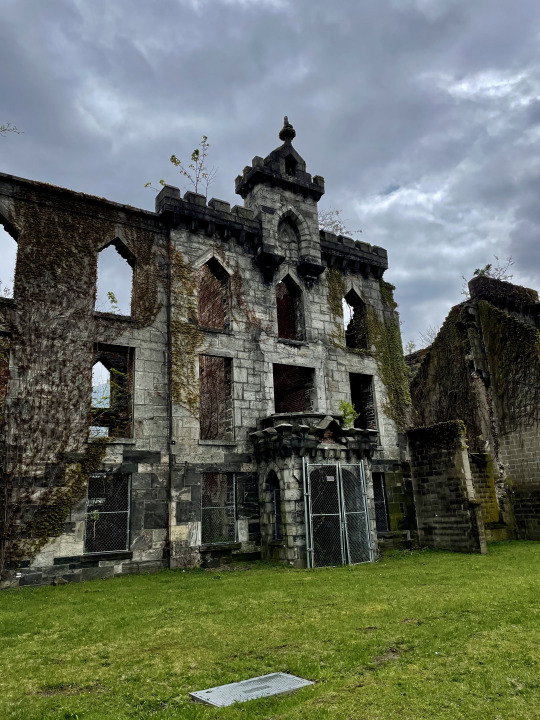

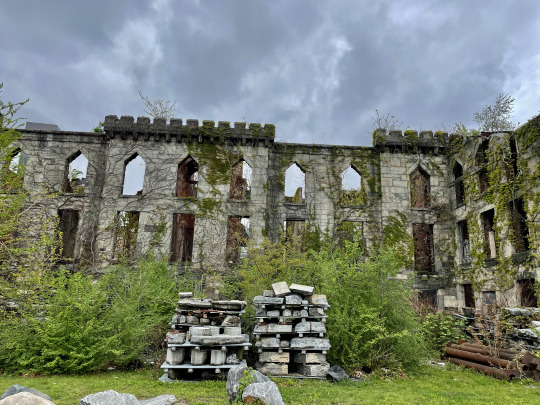
1 note
·
View note
Text
Mass Murderer Jeremiah Lexer...
Jeremiah Lexer was a plantation owner in the 19th-century in East Tennessee. He helped established Hamblen County along with a man named Hezekian Hamblen. Lexer lived on his large plantation just outside Hamblen County in a small area known as Talbott, TN where he was thought of as an upstanding member of the community. No one suspected Mr. Lexer of anything but being a normal family man and grandfather of three.
The first missing persons’ cases started being reported in 1887 to the Hamblen County Sheriff J. F. Hayes and did so until the year 1902. Due to the dangerous wildlife in the mountains or the likelihood of getting lost in the widespread terrain of the Appalachian mountains these reports were for the most part ignored. Everything however would come to light on July 5, 1902, when Jeremiah went on a brutal killing spree wiping out his whole family before taking his own life.
Using a freshly sharpened ax he maliciously hacked his wife, son, daughter-in-law, and his three grandchildren that were 12,8, and 4 to death. The remnants of all six of their bodies were found scattered inside the home which made the murders truly sickening. To add to the horror, he smeared unintelligible phrases on the walls using his family’s blood. Once he was done with his final horrific act he walked up the staircase to the second floor, placed the bloody ax on the mantle, then jumped, headfirst to his death out the 2nd-floor window. While investigating the murders of his family and himself 26 other bodies were found linking him to 27 murders however, 31 separate rotted and decomposed victims were discovered tossed in a pit in the backwoods of the property. This leaving the true body count unknown and with decades of inhumane experiments and slaughter on people and animals, the count could almost be 100.
Unfortunately, Jeremiah Lexer was very troubled by an undiagnosed severe form of schizophrenia and bipolar disorder which at that time was not a fully understood condition. This left him unchecked and without medication causing his mind to be completely consumed by his illness. Government officials, in order to populate the under-funded and struggling economy of Hamblen County, bribed law enforcement and local media to cover up the murders so it would not scare away potential residents and business owners from moving to the county. The newspaper released almost nothing about the story and law enforcement destroy almost all the evidence collected from the plantation beside the remaining pieces which were sealed until 1987.
In later years, the property became The Attic Restaurant where it operated for many years with an attached hair salon and barbershop in the back. An addition was then added to the back of the home for additional restaurant seating. When that restaurant closed the property switch ownership and become a seafood restaurant that closed in 2001. Since then the Manor was abandoned and left for ruin due to its horrific past. Now, the location has been turned into a Haunted House attraction with the Manor and its history being the attraction’s focus. Today, the steps he took his final walk up are still there and the window he jumped to his death can still be seen from the highway along with the Manor.
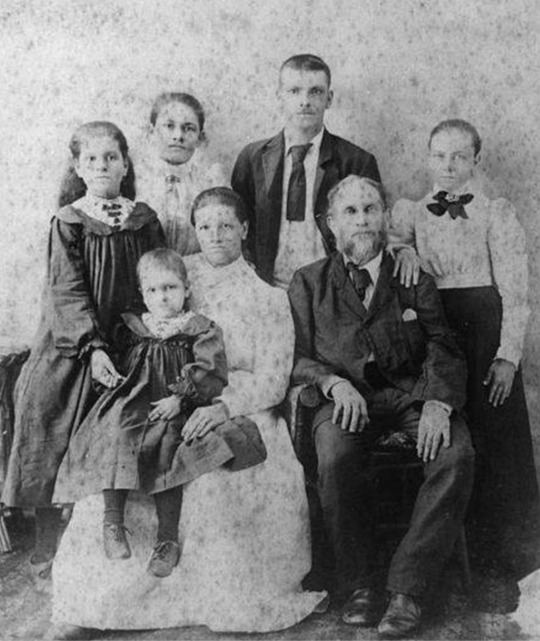

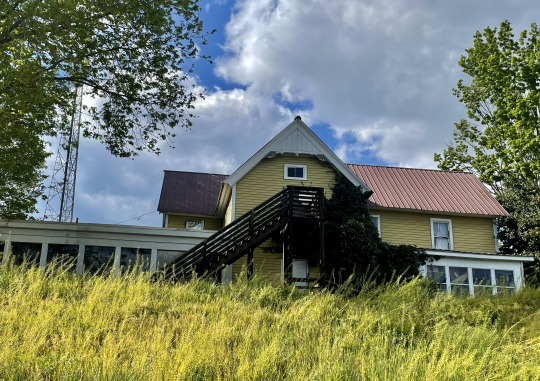
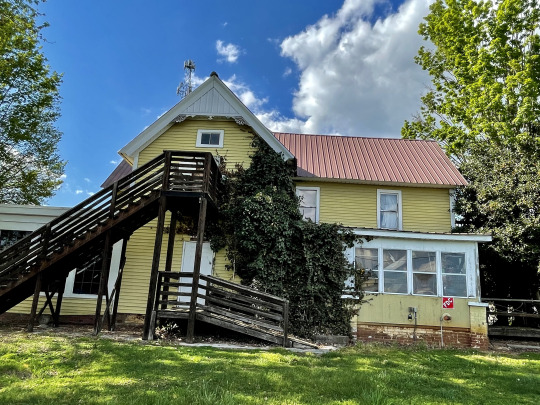

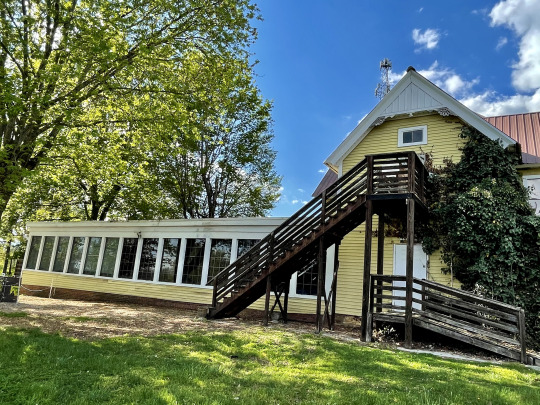

3 notes
·
View notes
Text
Lazarus Clark Shepard
Lazarus Clark Shepard or Mr. L. C. Shepard was born in 1816 and died at the age of 85 in 1902. He lived a long and very busy life and accomplished many things. He started as a woodworker in his father's woodworking establishment from the age of 15 and was a business partner by the age of 21. Later, he would marry a member of a prominent Bridgeport, Conn. Family, Miss Emily E. Strong and soon move to Knoxville around 1854. One year after he arrived in Knoxville the first railroad train moved through the area. He would be around to see almost every development of the great city of Knoxville, TN.
Shepard started his own wood-working Business in Knoxville, but four years later would lose it due to a fire. Sometime after he connected himself with the old E.T.V & G. Railway and was made Forman of a car building department for the next nine years being perhaps, the first department Forman of his kind employed by the railroad. After nine years he got connected to the Knoxville rolling mill and got into the furniture business. He would add a plant that manufactured coffins and furniture in 1867.
Mr. Shepard would at some point train to become Knoxville’s first embalmer and undertaker for funerals. The training of embalmer was very popular at the time during the Civil War to preserve the bodies of the deceased soldiers for shipment home. In 1875, L. C. Shepard would conduct the funeral for president Andrew Johnson in Greenville, TN in 1875 because Knoxville was the nearest city with an embalmer/undertaker even though it was 70 miles away. He would be in this business for 20 years. He would also become a charter member of the first IOOF (Independent Order of Odd Fellows) lodge in Knoxville and a trustee for the Tennessee School for the Deaf and Dumb. Shepherd was made secretary of the Knox County Humane society which he stayed in position of until he suffered a fall that would confine him to a hospital for a long period of time till his death.
His grave marker in Old Gray Cemetery in Knoxville, TN is the only one of its kind there and is made out of white bronze (zinc) which was cheaper than granite or marble at the time. Having knowledge in the funeral business he must've known that this was cheaper and made the choice to have it made this way after his wife’s death in 1882. Most markers of that time were hollow inside and so was Mr. Shepard’s. Legend is that it made his marker a drop-off point for bootleg liquor by using the metal panel as an entry point for a compartment to hide the alcohol for exchanges. Today, however, it has rested over time making the compartment permanently sealed.


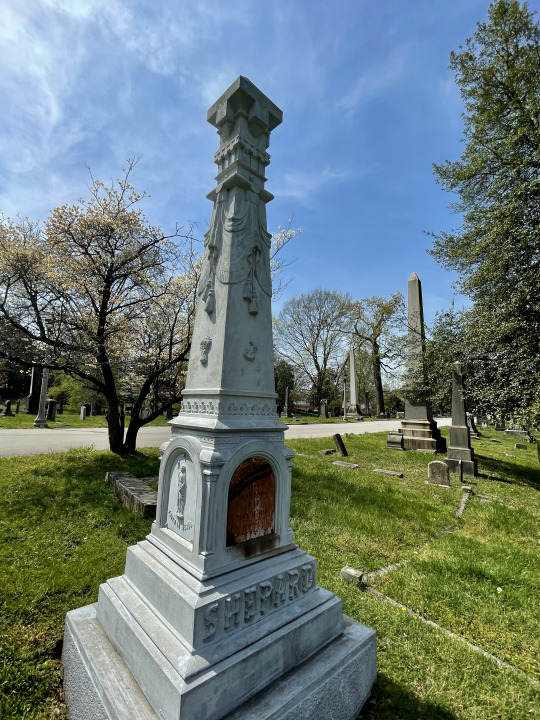
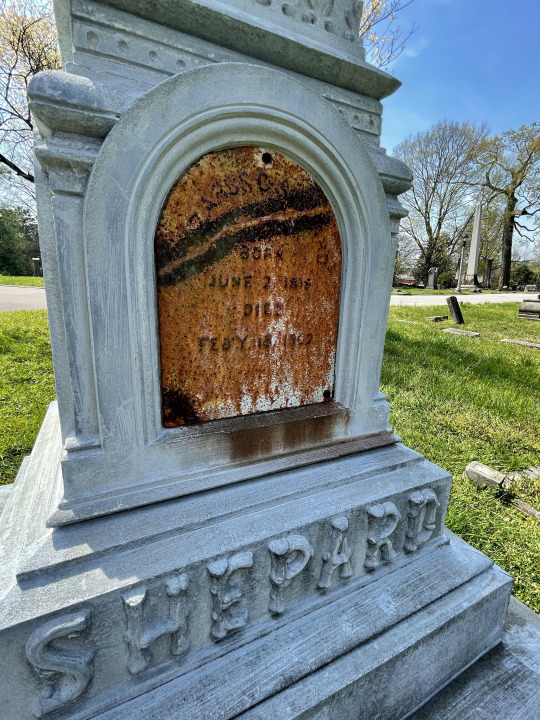
1 note
·
View note
Text
Coming Soon...
Working on a post for today and going to photograph and begin making a blog about a house and grounds that belong to a man that committed 27 murders including his own family. Keep an eye out for my next few blogs to find out more...
0 notes
Text
Abandon Abandon Town of Elkmont, Tennessee...
This week, we explored an abandoned town located in the Great Smoky Mountains National Park in Gatlinburg, Tennessee. The town, which was known as Elkmont, now known as the Elkmont Ghost Town, was first settled in the 1800s. One of the first cabins built in Elkmont is thought to be that of Robert Trentham who built his home in 1845. His son, who was a mountaineer and store owner, Levi Trentham, also known as “the prophet of the Smokies”, inherited his father's land in 1905 and would also become the mayor of Elkmont. Levi had his land surveyed and then sold plots to sport hunters and an industrialist named W. B. Townsend. Townsend and his large-scale logging enterprise would start the Little River Lumber Company that he established in 1900. He and a fellow group of Pennsylvanians bought 80,000 acres of land to start the company. The company would be a big success and was going strong for about 40 years cutting 560,000,000 board feet of lumber out of the Great Smoky Mountains. With the lumber company and the expansion of the Little River Railroad the town of Elkmont and other nearby towns boomed. Elkmont even had a train, “Elkmont Special”, that cost $1.90 that was a scenic tour that lasted 2 1/2 hours.
As time went on, wealthy visitors enjoyed taking day trips there and began to want to stay. In 1910, 50 acres would be sold by the railroad company to a wealthy group of Knoxville businessmen called the Appalachian Club. The club was for men to get away and go hunting or fishing as well as for family’s to go on weekend or summer excursions. This would lead to a clubhouse and cottage being built in the area to make the land more family-friendly. Since the club’s membership was quite exclusive, three brothers from Knoxville bought 65 acres also from the railroad/ logging company and would open the Wonderland Hotel in the same year as the purchase of the land, 1912. The Wonderland area would also become a club and the two clubs would become a favorite vacation spot for many wealthy families to get away from the summer heat. There was even a local song called “Elkmont Will Shine” that was often sung at parties. Elkmont would turn into four neighborhoods collectively consisting of 70 buildings. Elkmont Campground would also open in 1961 and would bring in people from all over the country which is still open to this day.
The club members were key in protecting and preserving the land in the area and creating the national park that is now the most visited national park in the country. The Railroad/Lumber Company in 1927 sold 76,507 acres for the park. They needed more land for the park but people were living on it. Many people were forced to leave their land and homes by either taking the full price of what their land was worth to leave immediately or sell for half the price for a lifetime lease till their passing. The park and the clubs were able to stay by negotiating a lifetime lease with President Franklin D Roosevelt that dedicated the Great Smoky Mountains National Park on September 2, 1940, “for the permanent enjoyment of people”. However, the leases would change in 1950 to 20-year leases to placate power companies who wanted a guarantee the cabins would be there if they committed to expanding power to the area. They would be renewed in 1972 but in 1992 the National Park Service declined another renewal and took over the land which included Elkmont causing the town to be completely abandoned.
As of today, only 18 of the 70 buildings are being preserved by the National Park Service. The National Park Service reestablished the Appalachian clubhouse and Spence cabin for today's use in addition to four cabins that preservation work was completed in 2017. The rest of Elkmont that once stood has now deteriorated and several homes are marked for removal. The Wonderland Hotel was placed on the National Register of Historic Places but collapsed in 2005 and the Wonderland Hotel annex site completely burned down in 2016 when wildfires devastated the Great Smoky Mountains National Park and Gatlinburg. Today, all that remains of a lot of Elkmont is stone chimneys and stone steps and foundations from the cabins and houses that once stood there that can be seen as you hike the area. Parts of the neighborhood of Daisy Town in Elkmont that has been preserved are still there for tourists for those who want to take a step back in time.

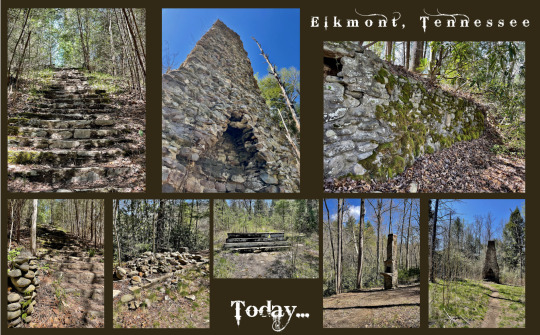
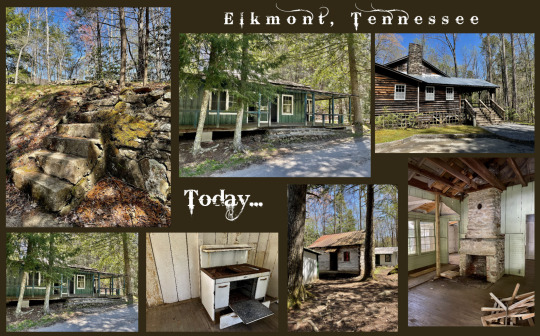
1 note
·
View note
Text
Coming Soon...
Going on some new explorations this weekend so keep an eye out for my new abandon/historical post...

0 notes
Text
Ralph Henry Mountcastle:
Here is Ralph Henry Mountcastle, his grave is located at Old Gray Cemetery in Knoxville TN. He was born on April 22, 1867, and was killed in a train crash on September 24, 1904, at the age of 37. The train crash occurred in New Market, TN, and at the time was the worst wreck of its kind in North America. A local train number 15 and the Carolina special number 12 were the two trains involved in the crash. Train number 15 was headed for Knoxville from Bristol and it picked up passengers in Morristown and New Market. Around 140 passengers were on number 15 at the time. The Carolina special number 12 which left Chattanooga and then made a loop through Knoxville and then Morristown was on its way out to eventually end up in Asheville, North Carolina. The Carolina special was headed home bringing passengers from the World’s Fair in St. Louis, Missouri, from trying the invention of the new treat: the ice cream cone. The number 12 train was carrying 210 passengers. They were unaware of what was about to happen.On what would be a tragic Saturday morning the two trains were traveling on a single track. Number 15 was supposed to merge off onto what was called Hodges switch which was located in between New Market and Strawberry Plains until the Carolina special passed. However, number 15 did not merge, and a telegraph was quickly sent to warn the Carolina special. When they realized what had happened it was too late. Running behind schedule, the engineer of the number 15 train decided to speed up to 70 mph and the Carolina special was traveling at 60 mph. The estimated speed of the trains when they hit head on was 110 mph. The engineer noticing the oncoming impact tried to slow the trains down but was only able to slow them down slightly. The Carolina special just rounded the curve when they struck. The impact of the trains was so strong that it knocked the steam boilers off of both locomotives. The devastation was enormous! The massive locomotive number 15 flew up over the Carolina special landing on top of three wooden passenger coaches. The whole disaster was over in about seven seconds. No passengers had been killed on the number 15 however the Carolina special lost most of its passengers and many people were injured. The death toll that day was believed to be up to 113 people. Today, not only is Ralph Henry Mountcastle laid to rest in the old Gray Cemetery but there's another victim from the same crash there as well.



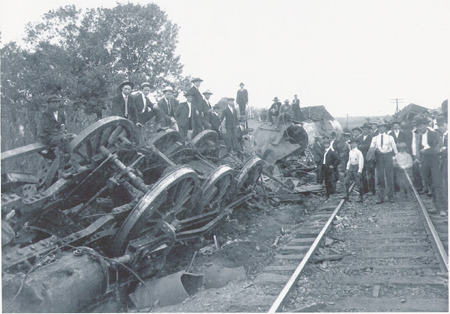
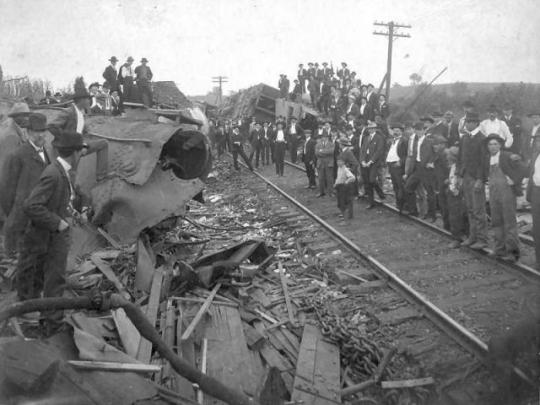
1 note
·
View note
Text
Old Gray Cemetery: History
Old Gray Cemetery, established in 1850, is a 13-acre cemetery located in Knoxville Tennessee. People there range from politicians, soldiers, activists, artists, and influential citizens. With its Victorian-era marble sculptures and elaborate carvings on many of the gravestones, it is a beautiful and unique place. The cemetery was named after Thomas Gray who was an English poet born in the year 1716 and died in the year 1771. The cemetery, also called the garden cemetery, resembles a public park with extensive greenery, elegant headstones, and spaced-out graves. The first person laid to rest there was a man named William Martin, wounded from a canon explosion during the cities Fourth of July celebration on July 15 in the year 1851; however, the cemetery was not dedicated until June 1, 1852, when the first 40 plots were sold at public auction. The cemetery has also seen the largest amount of mourners known to attend a burial in the south which consisted of 40,000 people. They were there to mourn the death of the former Tennessee governor Robert “Fiddlin’ Bob” Taylor in the year 1912. Robert Taylor's grave was later moved to Johnson City. In 1996 the cemetery was added to the National Register of Historic Places.

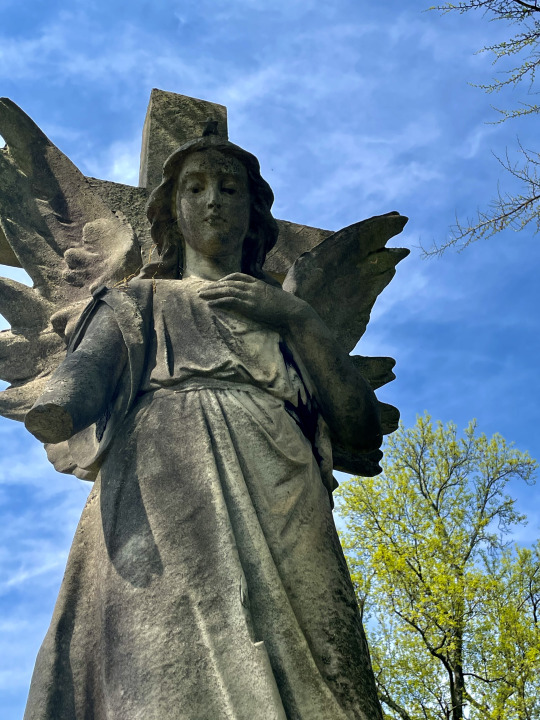


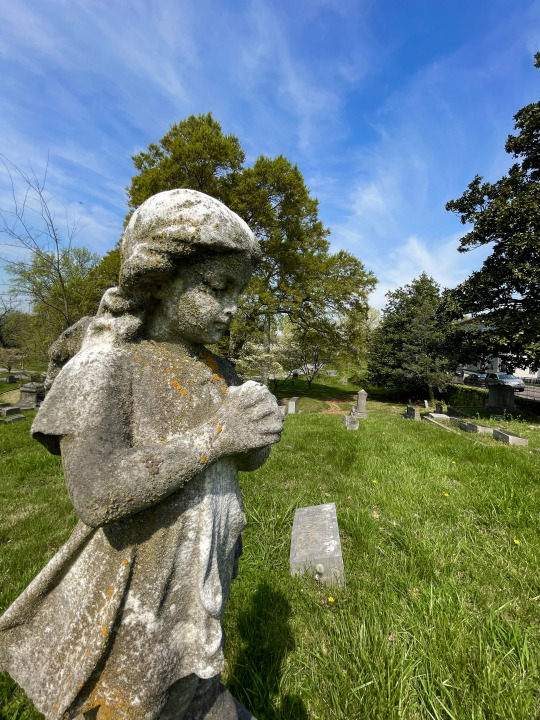




0 notes
Text
Tate Springs Hotel & Resort
Tate Springs Hotel and Resort was originally 6,000 acres that a man named Colonel William Hord bought from a North Carolina land grant in 1791. Later Samuel Tate would buy nearly half of the land in 1865. He would build the first hotel that same year at the spring site that would accommodate 500 guests.
The springs, which the Cherokee Indian tribe greatly valued its healing properties, would catch the attention of a Union Army veteran by the name of Thomas Tomlinson in 1876. The Tate Family would sell the spring and hotel property to Thompson who would then go on to build the first springhouse. The springhouse was an elegant two-story gazebo made with a Victorian style. Between the years 1898 to 1905, he would add on new sections of the hotel over time to hold a capacity of 600 guests. Thomas would pass away in 1909 and would pass the ownership on to his sons and daughters and would be operated by one of his sons, Clem Tomlinson.
Later on, the resort would add the addition of a Bathhouse and swimming pool, private cottages, and an 18 hole golf course. There were also tennis courts, billiards room, elegant ballroom, horse riding stables, a powerhouse, sewage treatment plant, water pump station, and 100-acre natural park. The springs, which were well known for their healing abilities on stomach, kidney, and liver disease, were shipped internationally and even prescribe by leading physicians.
In the end, a decline in revenue and usage from the great depression, closer of the railroad, along with the loss of land for the impoundment of the Holston River would cause the resort to close its doors in 1941. Structures and the golf course would be separated from the hotel by the flooding of the Holston River. The hotel and what remained would be finally sold to Kingswood School and orphanage in 1943 - which still owns it to this day. The hotel, sadly though, would be destroyed in a massive fire in 1963. Today all that stands is the springhouse, bathhouse, a few houses, and the remains of where the Hotel once stood.


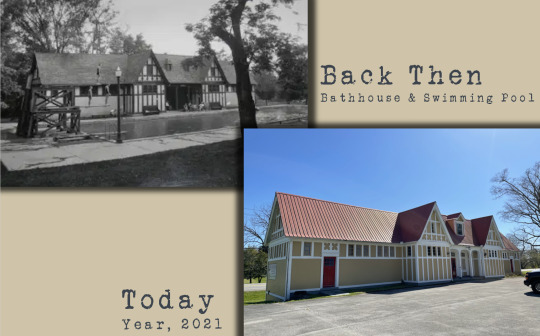
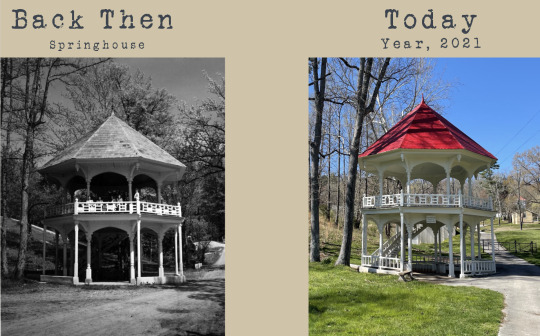
1 note
·
View note
Text
Hello and Welcome...
Here we will explore some Abandon or Historical places. We will learn about their history or why they have now been left to nature. When I can't travel I will share interesting facts about some people involved in history or have history that have passed on. Hope you will join me…
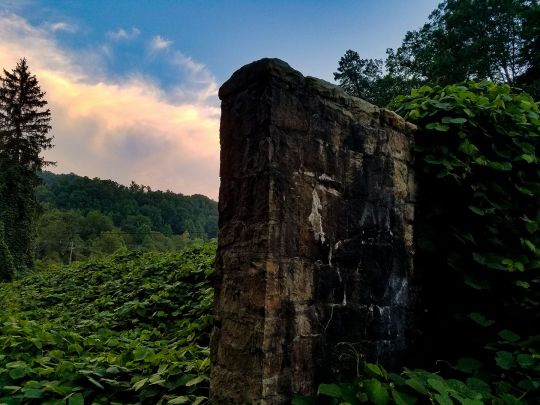
Photo is from exploring Pressman’s Home an abandoned town in East Tennessee.
8 notes
·
View notes